Water in the human body is a large part - 60%. Evaporation of water from the surface of the body and during breathing occurs every second. With evaporation, a person loses up to 1.3 liters of fluid per day. To maintain a physiological balance between evaporation and absorption of moisture (as well as protect the nasal mucosa from drying out), you need optimum humidity air in residential premises.
What should be the humidity at home?
Most people subjectively assess air with a humidity of 40-60% as “comfortable”. What is the optimal air humidity, according to experts, in the apartment? It is believed that the average level of relative humidity should range from 30 to 65%.
According to construction standards, indoor air humidity in winter should be 30-45%, in summer - 30-60%. Deviation from these standards can have negative health consequences. It is difficult to say which is more harmful: increased or decreased humidity.
Excessive moisture and dampness leads to the appearance of such an unpleasant phenomenon as mold. Mold fungi are very fond of warm, moist places where they begin to multiply intensively and provoke respiratory and a. Three signs that indicate that it’s time for you to buy a dehumidifier:
- condensation on windows and other indoor surfaces;
- the appearance of mold spots on the walls;
- the smell of a "musty basement."
A dry apartment at first glance is better suited for a prosperous life, but do not be surprised if you are haunted by constant colds, skin irritations and a feeling of chronic fatigue. If the clothes are “beating current”, there is a lot of dust in the air, despite regular cleaning, and the parquet is creaking, then it's time to think about the need to moisten the room. The easiest ways to do this are wet cleaning, hanging wet towels and placing open water tanks in the apartment.
Maintaining optimum humidity in the house will not only provide maximum comfort for a healthy stay, but will also help protect musical instruments, wooden furniture, books, paintings and other things from the damaging effects of dryness or moisture.
Our body receives moisture not only from food, but also from the air, but, alas, in our apartments the necessary humidity is not always maintained. Especially during the heating period. What to do?
Closer to the heating season, the problem of indoor air humidity becomes relevant. When batteries and other heaters start to work, the air is so dry that its relative humidity often does not exceed 20%. For comparison, in the Sahara desert, air humidity is 25%. It turns out that we live and work in conditions comparable to desert conditions.
What is the optimal humidity?
For humans, the optimal humidity is 40-70%
For office equipment, the optimal air humidity is - 45-60%
For plants, the optimal air humidity is - 55-75%
For furniture, the optimal humidity is - 40-60%
For books, the optimal humidity is - 40-60%
Not only are we suffering from a lack of moisture, but also everything that is in our houses and apartments. As a result, furniture, parquet and appliances can deteriorate, and plants can simply perish.
What is fraught with insufficient air humidity in the house for a person?
As you know, our skin is 70% water, in childhood, when not all the processes of thermoregulation are developed, the skin is especially vulnerable. Therefore, the relevance of maintaining relative humidity in the room where children live is especially high. One of the necessary conditions for the normal development of the baby is the optimal humidity, which should be at least 50%, as pediatricians advise. In addition, one of the unpleasant consequences of low humidity is also an increased circulation of dust in the air, and dust is one of the most common allergens! Any doctor, let alone a pediatrician, will tell you that for a healthy immunity, a healthy climate in the house is also important, and in particular maintaining optimal temperature and humidity.
The drier the air we breathe, the more fluid our body spends to moisturize it, therefore, the likelihood of health problems increases, especially in children. The lungs and mucous membranes of the nasopharynx constantly interact with air and react negatively to the insufficient moisture content in it. The mucous membrane dries up, breathing becomes difficult, there may be a dry mouth and dry eye syndrome.
The main secret of youth is the preservation of the natural moisture of the skin. As you know, the human body consists of almost two-thirds of water. And more than 30% of this amount is contained in the skin, which allows the skin to maintain its elasticity and firmness. The concept of "water balance", or the balance between the amount of incoming
Room Humidification Options
In order to humidify the air in the room, you can use the "grandmother" method and just hang wet linen around the apartment or house. But in this case, control relative humidity air is not possible. Moreover, modern technologies do not stand still and today optimal air humidification and maintaining its humidity at the right level is quite affordable. Today, there are several types of humidifiers: traditional, steam and ultrasonic.
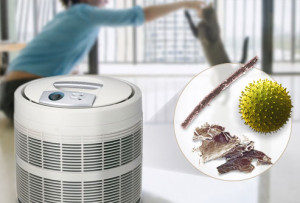
Traditional moisturizers
A traditional humidifier works according to the principle of “cold” evaporation. Water is poured into a special tank, it enters the evaporating elements from the tank, then the fan draws in dry air and drives it through the evaporator. By this simple principle, the air is moistened.
Conventional humidifiers are energy efficient and easy to operate. In order to increase the performance of a traditional humidifier, it is enough to put it near a heat source, where the air circulation is higher. In this case, the evaporation rate increases. When choosing a traditional humidifier, prefer one that contains an antibacterial cassette. Thanks to this cartridge, the air is cleaned of pathogenic microorganisms.
Steam humidifier
The steam humidifier operates in accordance with the principle of “hot” evaporation. The water in the humidifier is heated using two electrodes, and after reaching the maximum temperature is converted to steam.
Using a steam humidifier, you can achieve an increase in humidity of more than 60%. Another advantage of this type of humidifier is its ease of maintenance. When the water runs out in the tank, the device itself turns off, for its operation, consumables, filters and cartridges are not required.
Cons: A steam humidifier consumes a lot of energy.
Ultrasonic Humidifiers
Currently, the most popular and most advanced type of air humidifiers are ultrasonic humidifiers.
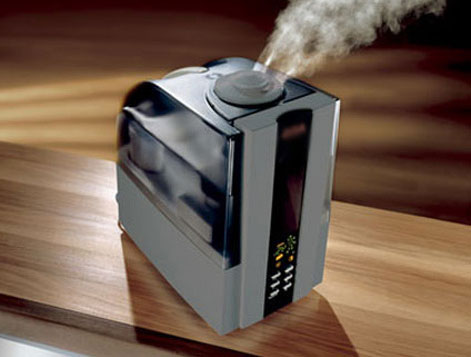
The principle of operation of an ultrasonic humidifier is to convert water into microparticles through high-frequency oscillations. Air is sucked in by the fan and passed through a kind of “cloud” consisting of microparticles of water and air, after which it is fed into the room in the form of wet and cold fog. Ultrasonic humidifiers are recommended for use in children's rooms, because due to the principle of operation of these devices, children will not be burned with hot steam.
Some ultrasonic humidifiers have a “warm steam” function that provides antibacterial protection.
First of all, human health depends on the humidity in the room, and secondly, the normal growth and development of plants. If there is insufficient moisture, the furniture may deteriorate. If the humidity in the room is constantly elevated, then this will lead to mold and mildew. If the air in the apartment is dry, then dust and dust mites may appear, which many children are allergic to.
Methods for measuring humidity in an apartment
What should be the humidity? There are norms of humidity in each room according to GOST.
There is a special device for measuring air humidity in the apartment, it is called a hygrometer. The screen displays the coefficient of humidity and room temperature. In summer, humidity can not be raised artificially, but in winter it must be done. In summer, the room is most often normal humidity.
- Humidity is determined using the device and the table of standards. It is necessary to identify the ratio of norms.
- It is necessary to collect water in a container and put in the refrigerator. The capacity should be transparent. After 3 hours, it must be removed and left in a room, but away from heating systems. Observation should last 5-10 minutes. If the walls of the container are fogged up and then dried up immediately, then the air in the room is dry. If the glass remains fogged, then the humidity is medium. If streams flowed in a glass - high.
- What humidity in the room can be determined using a spruce branch. Its length should be 25-30 cm. The branch is attached to the board and the position of the loose part of the spruce is marked with a pen. If the room is wet, the branch will lower. If not, then the air is normal. Observe the position of the coniferous branch every day and note the changes. The stronger the branch drops, the higher the humidity.
- We need to take a fir cone and put it away from the battery and look at its scales. If they begin to shrink, then the humidity is high; if they fluff, then dry air prevails in the room. If it remains unchanged, then the humidity level is normal.
When it is necessary to increase the humidity in the apartment:
- In the winter.
- When a child has a dry cough.
- If it becomes hard to breathe.
- When a child has an exacerbation of an allergy.
Ways to increase humidity
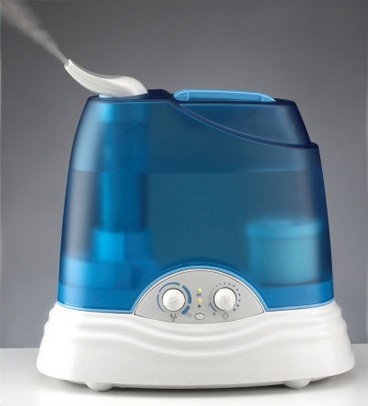
- Traditional humidifier - a fan is built into it that passes air through a bowl of liquid. But air humidity is reached no more than 60%, and the apartment will be noisy.
- Steam - there are special humidifiers in which water boils, and the steam comes out, thereby increasing humidity. With it, you can achieve normal room humidity.
- Ultrasonic - This humidifier also turns liquid into vapor using a unique membrane. Also, many models destroy microns present in the air, from which it will become cleaner.
How long does it take to humidify an apartment with humidifiers. It will take about 2-3 hours.
Alternative methods of increasing the humidity in the room
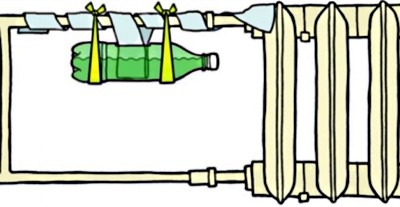
The air in the room will become humid if you put a wet cloth on the radiators. It will start to warm up, and the water from it will evaporate. How many times a day to wet it? This should be done 3-5 times a day.
On the windowsills under the batteries, you can put cups of water, from high temperature the water will evaporate.
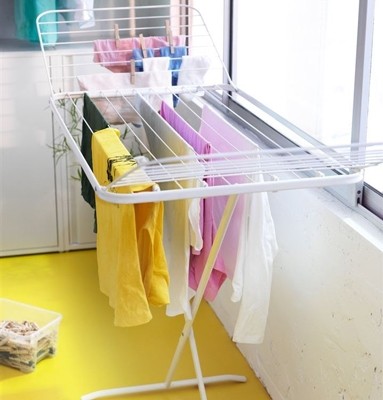
To increase the humidity, it is necessary to dry the laundry indoors.
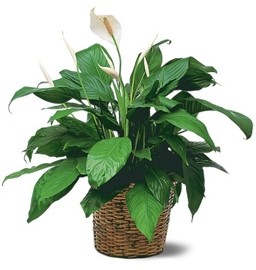
Indoor plants help maintain normal moisture levels.
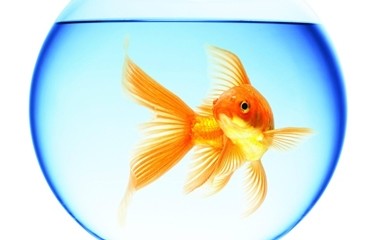
You can install an aquarium.
After taking a shower or bath, leave the door open, moist air will enter other rooms.
How to lower the humidity in the apartment?
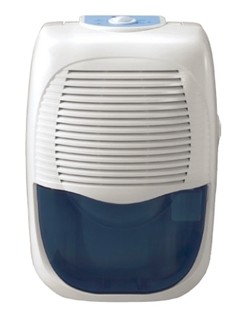
Using a dehumidifier. It works due to the temperature difference. Excess moisture turns into condensate. When choosing a device, you should pay attention to its performance. They can absorb moisture up to 300 liters per day. Such devices are installed in combined bathrooms and kitchens, if they do not have a normal hood.
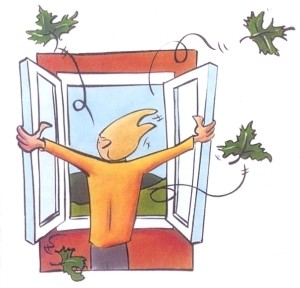
Ventilate all rooms in the apartment as often as possible, this will help maintain air humidity standards. Fresh air is very good for health, especially in times of illness. In a ventilated room, bacteria spread more slowly.
In bathrooms, monitor the operation of hoods and ventilation.
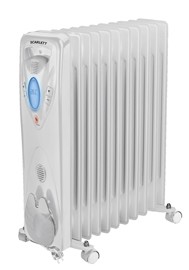
Use oil coolers. They perfectly dry the air.
Maintain a normal level in the room will help air conditioning. It can both increase and decrease the humidity in the apartment.
To reduce humidity will help sunlight penetrating through the windows.
The humidity of the apartment should always be normal, for a normal existence. The health of loved ones and pets depends on this. What will be the moisture of the apartment in order to live comfortably, its owner must determine, but still it is worth adhering to the norms. Comfortable humidity will help not only the speedy recovery of children, but also a quick fall asleep, this is important for people with sleep disorders.
Humidity is a measurement that expresses the quantitative content of water vapor. In a living room, the ideal humidity is 40-65%. In summer, the air in the street is well humidified (especially in rainy weather, the relative humidity indicator can be 80-90%), but by 15:00 in the room the air humidity drops to 20%, and therefore hot air requires additional methods of humidification and cooling.
In winter, central heating systems and other heating devices cause air to dry out. This happens because with strong heating the temperature rises, and the amount of water vapor does not increase, which leads to increased evaporation of moisture from various sources: from, the skin and the entire human body, and even furniture. As a rule, the relative humidity in the premises in winter is not more than 15%. Imagine this is less than in the Sahara desert (there the humidity is about 25%). The optimal humidity indicators clearly demonstrate that the level of 15% is clearly insufficient:
1. For a person - 40-65%.
2. For household appliances and computer equipment - 45-60%.
4. For libraries, museum exhibits and art galleries - 40-60%.
The only way out is to moisten the room.. There are many “grandmother” moisturizing recipes. For example, you can hang wet rags and towels in the room. Another option is to put the water tank on the heater. Evaporation of water will gradually increase humidity. Those who do not mind the money can buy a decorative room fountain. However, the most practical and effective way to increase the humidity in the living room is to put a humidifier, and experts will tell you how to choose it.
Types of Household Humidifiers
The most common type of humidifier is ultrasonic.. At the heart of the device is a piezoelectric element that operates in the ultrasonic range. He breaks the water into tiny drops. Water is expelled from the device by a fan and rises like fog, as a result, humidity rises. Modern ultrasonic devices do not respond to water quality, as manufacturers integrate additional filter elements into the system. These are the most effective devices - they evaporate water of the order of 650 ml / h. They have a built-in humidity control system, and there are other functions. They consume no more than 65 Wh of electricity with the condition of additional functionality.
The next most common humidifier is a traditional or cold type.. It includes devices that operate due to filter mats or sponges made of microcellulose and other porous materials. These also include air washers. Traditional - the most economical, consume no more than 25-30 Wh · h of electricity. They evaporate water as much as is currently not enough to compensate for room humidity to normal. Manufacturers most often indicate their productivity indicators by the minimum: no more than 450-500 ml / h. In fact, such a device can evaporate up to one and a half to two liters per hour.
A small share of the market is occupied by hot humidification devices operating on the basis of heating elements, which increase the temperature of water to 65-70 ° C, after which it begins to evaporate. These devices are the most unpretentious, you can pour any water into them, even from the tap. They have great performance, but they are also the most energy-intensive - they consume about 200 Wh of electricity.
Features of care for different types of humidifiers
In traditionalreborabies will definitely have to change the filter formats. Any manufacturer almost always impregnates them with a special substance that suppresses or slows down the growth of mold, fungi. The duration of the substance is about 6 months. But periodically have to clean any device. Only hot humidification devices do not need thorough cleaning. However, they form scale on the heating elements. Therefore, they have to be washed, like ordinary teapots.
As for air washes, they do not have replaceable elements. This is a great advantage - everything is easy to clean under the tap. The drums in these devices are disassembled - they can be decomposed into separate "plates" and put in the dishwasher.
A cartridge for softening water - a cassette with ion exchange resin - is necessarily built into the ultrasonic device. It takes away from the water ions that can make water hard, giving away other charged particles that protect the membrane and internal surfaces from the deposition of salts. In addition, it releases silver ions, which further disinfects water. When the liquid enters the working volume, a special device heats it up to 65-70 ° C. At this time, the pasteurization effect occurs - in the water all living things die. The ultrasound element also contributes to this. When operating devices of this type, replaceable elements, if any, should be regularly updated and carry out hygienic treatment when he himself signals this.
In many humidifiers, the inner surface of the tanks is covered with a special BACTERIAL FREE film, which does not allow algae to grow on the plastic, but it is afraid of hot water and begins to collapse at temperatures above 35 ° C. Therefore, pour clean cold water into the device.
Types of filters for household air purifiers
 In the simplest device, the following filters are present: electrostatic grid, HEPA (usually 10-13th grade) and carbon filter. By and large, nothing else is needed to improve indoor air quality. The electrostatic grid (it should be washed from time to time) will take on coarse dust, HEPA - all particles up to 0.3 microns (dust, tobacco smoke). Coal adsorbs odors. But the number of degrees of purification can be much larger. There are devices that provide from 9 to 12 degrees.
In the simplest device, the following filters are present: electrostatic grid, HEPA (usually 10-13th grade) and carbon filter. By and large, nothing else is needed to improve indoor air quality. The electrostatic grid (it should be washed from time to time) will take on coarse dust, HEPA - all particles up to 0.3 microns (dust, tobacco smoke). Coal adsorbs odors. But the number of degrees of purification can be much larger. There are devices that provide from 9 to 12 degrees.
Of the innovations, the photocatalytic filter is now widely used. It is a plate with a special coating, equipped with a source of ultraviolet radiation installed inside the device. All organic molecules (odor carriers, formaldehydes), passing through these plates, are broken down and destroyed. If something living in the air remains, then an ultraviolet lamp disinfects it. Usually, after this powerful cleaner, the next step is either HEPA or a charcoal filter so that everything “recycled” is dragged away and does not go into the room.
There are other types of filters:
- zeolite - with the properties of adsorption and catalysis;
- atomic - cleaning with a plasma discharge;
- ion exchange filters, - the same as for water, but intended for air. You can mention filters into which ionizers are inserted different types. Some ionize a grid on which dirt sticks; others enrich the air itself with ions, thereby balancing the ratio of positively and negatively charged particles and other substances that are in the ion-cationic state. There are so-called disinfecting filters - spongy or reticulated, which are saturated with any special bactericidal or phyto substances.
But heating appliances dry the air, which entails not the most pleasant consequences - drying out of mucous membranes, colds and allergic diseases.
Humidity can be determined by a hygrometer. This is not a very expensive and easy to use device. But in order to establish whether the humidity in the room is normal, you can do without it, moreover, in several ways.
Take an ordinary room thermometer, record its readings in this room. Then wrap the thermometer nose with a damp cloth and leave it in the same room for 5-10 minutes. Calculate the relative humidity using a formula derived from the ratio. It will be equal to the result of dividing the product of the temperature of the second measurement and 100% by the temperature of the first measurement.
There is another fairly simple way to determine the air humidity in the room. You need to fill a small glass with water and put in the refrigerator for a while, for example, at night. In the morning, remove and leave for 5 minutes in a room away from heating appliances and humidifiers.
Watch the surface of the glass fog up. If after 5 minutes the glass managed to dry, this means that the humidity in the room is low. Even fogging of the glass indicates normal humidity. And if streams of condensate flowed through it, then the humidity is high.
The issue of measuring humidity concerns not only physicists, but also weather forecasters. And we - ordinary people should also be interested in this, especially if we spend quite a lot of time indoors. After all, excessive humidity has an adverse effect not only on the person, but also on the apartment as a whole. That's why humidity need to be controlled. There are several ways to measure indoor humidity.
You will need
- hygrometer or psychrometer.
Instruction manual
The principle of action of hygrometers is to analyze the effect of humidity on a certain matter. For example, a hair hygrometer uses an amazing feature of human hair - to change length under the influence of humidity. This method allows you to measure humidity ranging from 30% to 100%. In a film hygrometer, another sensitive element is used - an organic film. However, these types of hygrometers are less accurate than psychrometers, but in winter they are the main instruments with which to measure humidity. In addition to the above, there are several types of hygrometers: weight, ceramic, electrolytic, condensation.
Quite popular is the psychometric method for determining the humidity in the room. When using hygrometers, there is a deviation of about 5%, but using a psychrometer, you will get an absolutely accurate result. The psychrometer consists of two temperature sensors: one of them is wet, the other is dry. The humidity of the sensor is achieved due to the fact that it is wrapped in a wet cotton cloth. The moisture evaporates and cools the thermometer as a result. At the same time, another sensor records the exact temperature in the room. The received data is transmitted to a microprocessor, which measures the relative humidity air.

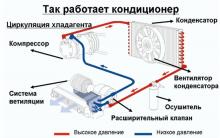
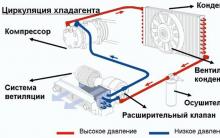
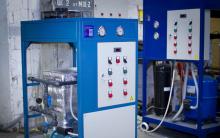
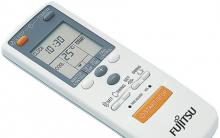

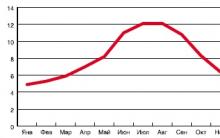




The best material for car trim
Principles of hardening the body
Do-it-yourself compressor - with minimal scrap costs
Which is better: do-it-yourself or factory-made compressor for painting a car
Causes of fuel pump malfunctions